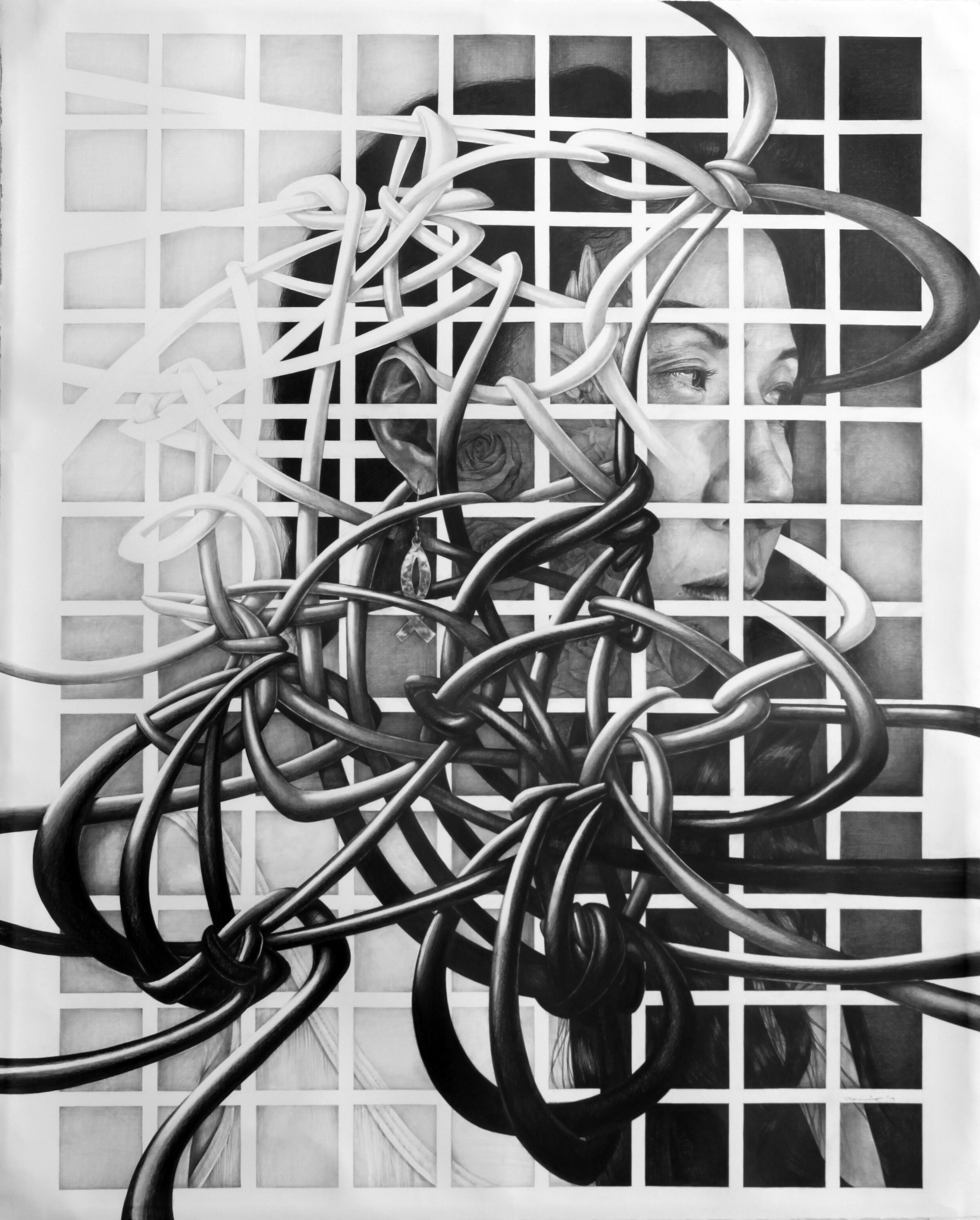Mayuko Ono Gray | United States
Reflecting a life which is both culturally Japanese and American, my graphite drawings hybridize influences from traditional Japanese calligraphy combined with Western drawing practices and aesthetics. Ejected out of Japan at the age of 18 with full of curiosity and no fear, swallowed by America, nearly dead, my works emerge from my experiences of displacement, immigration, deportation, love, trauma, the crush of motherhood, failed relationships and other meaningful encounters with the unknowable. My current works investigate and examine the unknowable through both images and proverbs.
Traditional Asian art-forms have often integrated word and image, and my interest and practice also follow the path in my unique way. In my current works, I mostly use images of persons, animals, and still lifes captured in my banal daily experiences. A Japanese proverb accompanies each work, spelling out the hiragana and kanji, characters intertwine to create a single line which has only one entrance and one exit. The calligraphic line begins at the top right and ends toward the bottom left of the page, following traditional Asian writing. The single line going through a pictorial plane is a metaphor of a life: one entrance as birth of physical body, and one exit as death and loss of physical body, and all the complicated experiences during existence between these two.
芸術は長く人生は短し_Art is long, Life is short (Geri)
Contemporary Art Station: Tell us about how you got started. When did you know you wanted to be an artist?
As many Japanese kids, I attended a calligraphy school in addition to regular elementary school since I was 6 years old. I had no idea that was an art form then, but now looking back that is where my aesthetics first developed. In junior high school, I got interested in Manga (comic books) and seriously considered becoming a manga artist. Many late nights were spent drawing manga, which I would send to publishers for critiques.
At high school when everyone was busy making decisions about their college and other future route, I did not have any doubt that I was going to an art college. Western manners of drawings in charcoals and graphite were not taught in regular high school art class but was a requirement for entrance exam, so I quite the calligraphy class and started attending a private drawing studio to drill the skills.
In short, I have always drawn one manner or other since I can remember, and it has always been a part of my life.
CAS: What is your process like, from initial idea to the creation of the piece? Do you usually develop the idea for a project before you find the "canvas", or vice versa?
My works are simply put a play of imagery and Japanese proverbs or sayings. It is about 50/50- when an imagery inspires me to start the process of creation and when a proverb or saying initiates it.
CAS: What do you love most about your creative process?
The process I have come to employ offer detailed planning phase when I can get my obsessive controlling nature to flourish, to mind calming process of rendering and massing of the values which I consider to be my meditative phase.
芸術は長く人生は短し_Art is long, Life is short (George)
CAS: What role does art and the artist play in the broader social conversation today?
There are many different aspects in art and artists- so only thing I can say is about my art and myself as artist.
The role for my art, I hope, is to offer viewers a moment of contemplation about their life and physical existence through the visual experience. At least, I hope my art offers a moment of visual experience that is enjoyable and somehow touches them in unconscious level.
CAS: Name a few of your favourite artists and influences.
The artist I love and respect the most is M.C. Escher. I have a strong attraction to details and order, and his works are just what I am looking for and working towards in my artistic career. His works also present his interest in geometry, and somehow my works are headed that direction as well.
CAS: What is the best advice you received as an artist?
1) I have always been interested in spiritual aspects of art making- one professor told me to be careful mentioning about that in this contemporary art world.
2) Good art is not how much stuff you can put into the work, but how much you can leave out and still stand as a good art.
CAS: When did you discover your voice as an artist?
There is no one occasion I can point to, to say I discovered my voice as an artist. I believe that art evolves on its own term, and that can only be nurtured by religiously attending to the practice.
CAS: What advice would you give to emerging artists trying to find their own?
1) Do not take in anyone's advice 100%. Only take advices which resonate with you and leave the rest.
2) No one will come to discover you. Doing a great work in your studio is important, but it is also important to reach out to get your works out.
3) Do not be a Prima donna. It is okay to be nice.
となりの花はあかい_The rose is always redder next door



